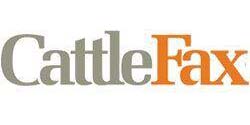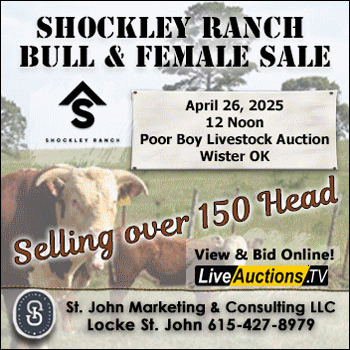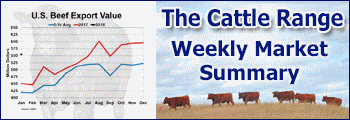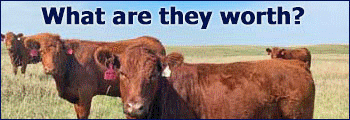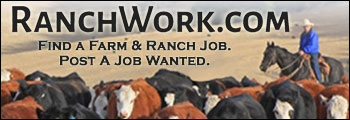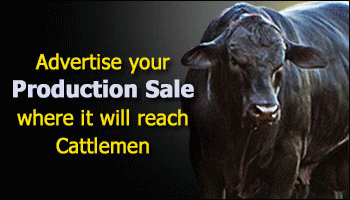The market analysts at CattleFax told beef producers at the 2023 Cattle Industry Convention in New Orleans that this could be a record price year for all classes of cattle.
The forecast comes after two years of herd liquidation, primarily as a result of widespread drought across the Great Plains and West. Economist Kevin Good of Cattle Fax said that 50% of the nation’s cows were in a drought zone last year, leading to a 13.5% culling rate across the industry. That’s the highest ever.
Slaughter numbers of both cows and finished cattle will be shrinking in 2023, and buyers will have to pay up to get what they want. Here’s the forecast for average prices.
- Fed cattle: $150 to $172 per hundredweight trading range, with an average of $158 for the year. That’s up $14 from last year. Highest prices should come in early summer, then again late in the year.
- 550-pound calves: $200 to $250 price range for the year, with an average of $225. That’s a bump of $29 over last year. Those 550-pound weaned steers will be worth $1,375 a head!
- Cull cows: After last year’s selloff, there won’t be as many culls this year, and demand for grinding hamburger is high. Prices will jump to $100 per hundredweight, $20 above last year. In fact, the demand for this class of beef may prompt more imports from Australia.
- Bred cows: As the nation’s cow herd sets to rebuild over the next several years, the demand for bred cows and heifers, and even cow-calf pairs, will also shoot up. Good quality bred cows could range from $1,900 to $2,300.
OTHER HIGHLIGHTS FROM CATTLEFAX
- The general economy is improving. Inflation is fading to maybe 3% to 4% by the end of 2023, said Mike Murphy. Higher interest rates may linger, and have already added $20 to $40 per head to the cost of ownership of feedlot cattle.
- Corn acreage will be similar to last year. The average yield will be higher on predictions of more favorable weather. Murphy expects about 85 million acres to be planted to corn, and the same for soybeans. Corn prices will stay in a range of about $5 to $5.50 a bushel.
- Hay prices will be dropping. This should kick in by the fall of 2023. Weather patterns are in the early stages of shifting to El Niño, which should help break the drought and expand hay production, while also finally greening up pastures.
- More beef-on-dairy steers. More dairy cows are getting bred to beef bulls to take advantage of market premiums for higher quality beef, especially compared to straight dairy. Now, about 7% of fed cattle slaughter is beef-on-dairy animals. Good expects that to be 15% by 2026.
- Beef exports are still strong. They add $500 per fed steer to cattle markets.
- Beef demand is incredibly strong. Good says that last year we had the highest per capita U.S. beef consumption in 12 years at 58 pounds. Still, in the face of that supply we also had record retail beef prices at $7.35 per pound. Higher prices amid higher supplies can only mean one thing: demand for quality beef is surging.
